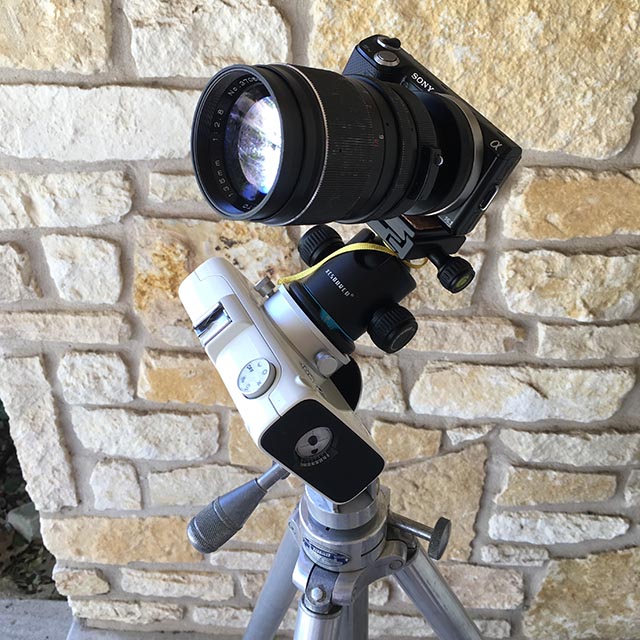- Images
- Blog
- Tools
- Questar
- The Questar telescope
- Questar resource links
- Search for Questar info
- 172mm Focal Reducer
- Afocal adapter for point and shoot camera
- Camera adapter lengths
- Camera adapter threading
- Camera connection
- Camera focusing
- Custom counterweight
- Drift Alignment Joy
- Finder Eyepiece Compatibility
- The Questar Moon 1981
- Questar Powerguide II Battery Life
- Questar Zone, How to Service Videos
- Red Dot finder mount for Questar
- Questar Viewing Table
- Wedge mounts
- White light solar filters comparison
- How to
- Get started in astronomy
- Astro RaspberryPi Camera and kin, the ASIAir and StellarMate
- Blind Smart-phone Equatorial Wedge or GEM Polar Alignment
- Camera phone adapter
- Celestron FirstScope with equatorial tripod mount
- Coat Pocket Astrophotography
- Day-lapse Images of Earthshine on the Crescent Moon
- Dobsonian Carrying Case
- DSO Astrophotography without a Telescope
- DSO imaging without a star tracker
- Estimating image resolution
- Lunar Eclipse Photography
- Moon photography - a dozen ways to shoot the Moon
- Meteor shower photography & planning
- Matching image sensor size to telescope resolution
- Narrow band imaging with color cameras
- Planetary Image Workflow
- Print and Display Astrophotography
- Observing
- Events
- More
- About
- Contact
Overview & equipment for lunar eclipse photography
Photographing a lunar eclipse is a challenge. You can use a wide variety of equipment with a sturdy tripod, a well thought out framing and exposure plan are the most important factors for great eclipse images.

The image above shows a typical camera based setup for lunar eclipse photography.
Equipment you will need:
- Almost any camera with manual exposure control is capable of capturing good images of a lunar eclipse. If you don't have a removable or zoom lens with a long reach you may be limited in your choice of frame of view. A camera with a high quality lens, good low light performance, and an interchangeable or zoom lens is a plus.
- A prime lens, zoom lens, or telescope with the right focal length to capture the images that you need.
- A sturdy tripod is essential. In addition to wind and vibration which can blur an image, you will need to adjust camera exposure without disturbing the camera's aim.
- An intervalometer accessory or camera application is a good way to get
uniformly spaced time lapse images. I plan an interval of several minutes
between images. This also allows plenty of time to make exposure changes and
check them between shots.
If you are comfortable with camera automation, camera tethering software like Xavier Jupier's Lunar Eclipse Maestro can be used to automate photographing the entire eclipse. - A motorized tracking mount that can track at the speed of the moon or the sun can make a plan with longer focal length images much easier to follow.
In addition to equipment, there are the usual astrophotography issues of working in the dark, getting a sharp focus, and keeping the camera steady. Other important considerations for a lunar eclipse include:
- It's a long complex event - nearly four hours for the umbral eclipse. The moon will move across a third of the sky making tracking important. Temperature, wind and cloud conditions can also change dramatically. The stories you can tell with your images depend on how the moon was tracked and framed.
- Dramatic changes in exposure - From the early partial eclipse to totality there can be 10 stops or more of exposure change. Near totality the exposure required changes second by second.
- Stacking and post-processing - the moon is normally bright and evenly illuminated allowing high quality single exposure images. During the late partial phases there is interesting detail in both the sunlit and shadow parts of the moon easily visible to our eyes. Cameras are incapable of recording this in a single image requiring multi-exposure high dynamic range (HDR) stacking techniques. Close up images of totality can require lucky image stacking to produce sharp low noise images.
My discussion follows a roughly chronological process:
Content created: 2019-01-14 and last modified: 2019-05-14
Comments
![]() Submit comments or questions about this page.
Submit comments or questions about this page.
By submitting a comment, you agree that: it may be included here in whole or part, attributed to you, and its content is subject to the site wide Creative Commons licensing.

How to
Starter telescopes for beginners
Getting started in astrophotography?
Choose & setup a camera for astrophotography
Astro RaspberryPi Camera and kin, the ASIAir and StellarMate
Blind Smart-phone Equatorial Wedge or GEM Polar Alignment
Celestron FirstScope with equatorial tripod mount
Day-lapse Images of Earthshine on the Crescent Moon
DSO Astrophotography without a Telescope
DSO imaging without a star tracker
Overview & equipment for lunar eclipse photography
Framing and tracking a lunar eclipse
Moon photography - a dozen ways to shoot the Moon
Meteor shower photography & planning
Matching image sensor size to telescope resolution
Narrow band imaging with color cameras
Print and Display Astrophotography

 Get started in astronomy
Get started in astronomy
